The 1905 International Tournament (now called the World Championships) almost didn’t happen.
Why?
Because of a debate over rings.
The 1905 International Tournament (now called the World Championships) almost didn’t happen.
Why?
Because of a debate over rings.
In 1938, Eugen Mack had yet another perfect score on vault. However, it wasn’t enough to beat the Czechoslovak team.
The Swiss team struggled in athletics (and rings). Shot put, in particular, dashed their hopes of becoming world champions.
Reusch, one of the top Swiss gymnasts, had a particularly rough time with athletics. Though Reusch won four apparatus titles, his scores didn’t count for the team total, which was based on the top six all-around scores. Reusch finished 7th on his team and 24th in the all-around overall. He scored a 0 in shot put (7.45 m).

Have you ever seen an old rulebook for the World Championships? Well, you’re in luck. In this article, you can find the official rulebook for the 1938 World Championships in Prague, as well as a translation of the sections.
From a historian’s perspective, this rulebook is important because it is a precursor to the 1949 Code of Points, specifying deductions and including lengthy criteria for evaluating compulsory routines.
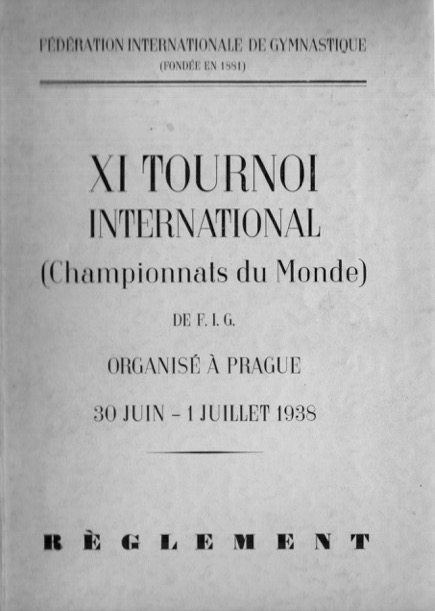
Confusion bookended the 1934 World Championships in Budapest.
Before the competition started, Germany showed up at the FIG Congress, wanting to become a member of the FIG and participate in the 1934 World Championships.
That was not the typical protocol. Usually, countries didn’t seek admission just hours before a competition started. So, the FIG Congress had to answer the question: if the German federation becomes a member one day, can German gymnasts compete at the World Championships the next day?
That was the first source of confusion. After the competition ended, the second source of confusion cropped up. The gymnastics community realized that the initial results had been miscalculated, and all the results had to be recalculated.

The 1934 World Championships were the first time that the competition was called the “World Championships.” Previously, the competition had been known as the “International Tournament.”
In 1934, the men competed on the six apparatus that modern gymnastics fans know and (maybe) love. In addition, there were three track and field events.
Let’s take a look at the rules.
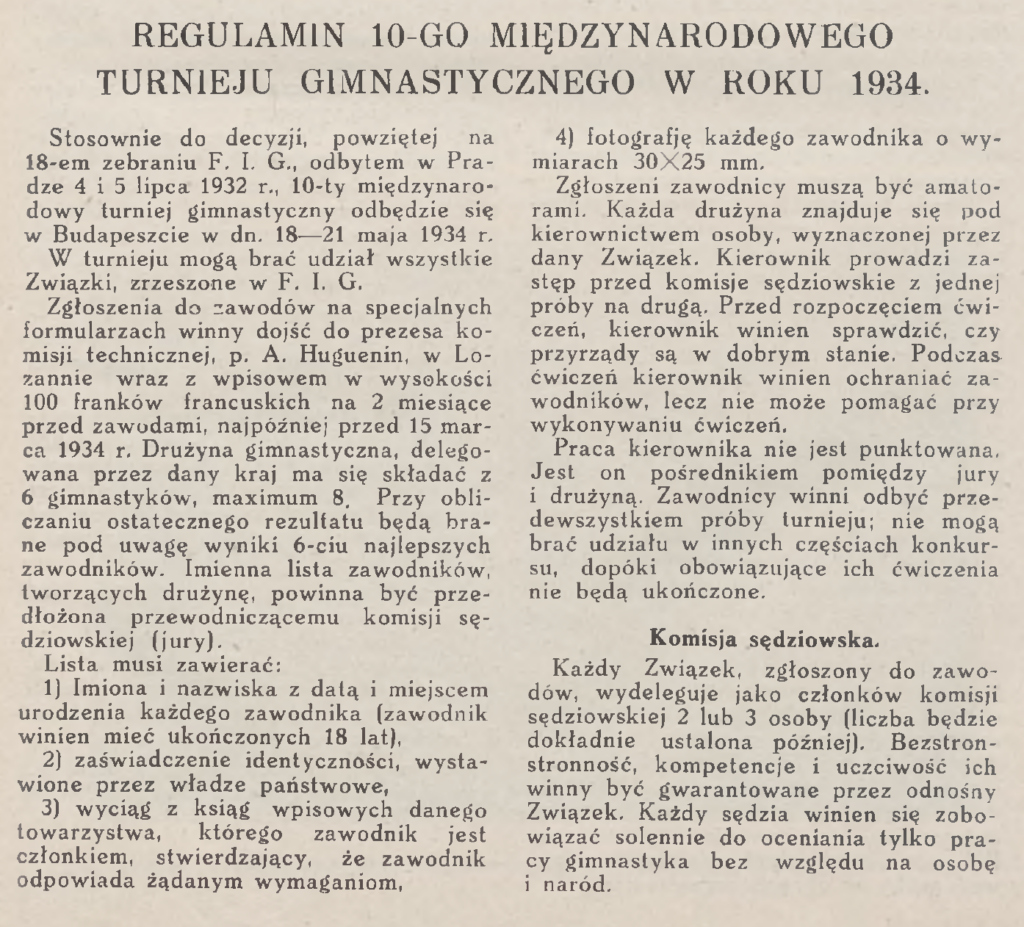
The men’s competition at the 1928 Olympics was a close battle between Czechoslovakia and Switzerland. It came down to the very last event, vault, on which Czechoslovak gymnast Šupčík fell and on which Swiss gymnast Eugen Mack received a perfect score for his compulsory routine.
Modern gymnastics fans might be surprised to know that one of the countries performed to music. During its ensemble floor routine, Yugoslavia told the history of its nation through music and movement. (Technically, it wasn’t Yugoslavia at the time but rather the Kingdom of Serbs, Croats, and Slovenes or SHS for short.)
Of course, there was a fair share of judging drama. It’s gymnastics.
Unfortunately, there were some organizational problems, too. Due to a mathematical error, the wrong person received the bronze medal on rings.

At the Olympic Games prior to 1928, the men competed in track and field events, rope climbing, or even an obstacle course (1920).
The Amsterdam Olympics marked a turning point in men’s gymnastics. For the first time, the athletes competed only on gymnastics apparatus at the Olympic Games. No rope climb. No sprints. No high jump. Just apparatus gymnastics.
However, the Olympic program still hadn’t taken its modern form. In 1928, male gymnasts didn’t perform individual floor routines. They did, however, perform on the floor as an ensemble, and, as we’ll discuss in the next post, the Yugoslav team had a remarkable ensemble routine.
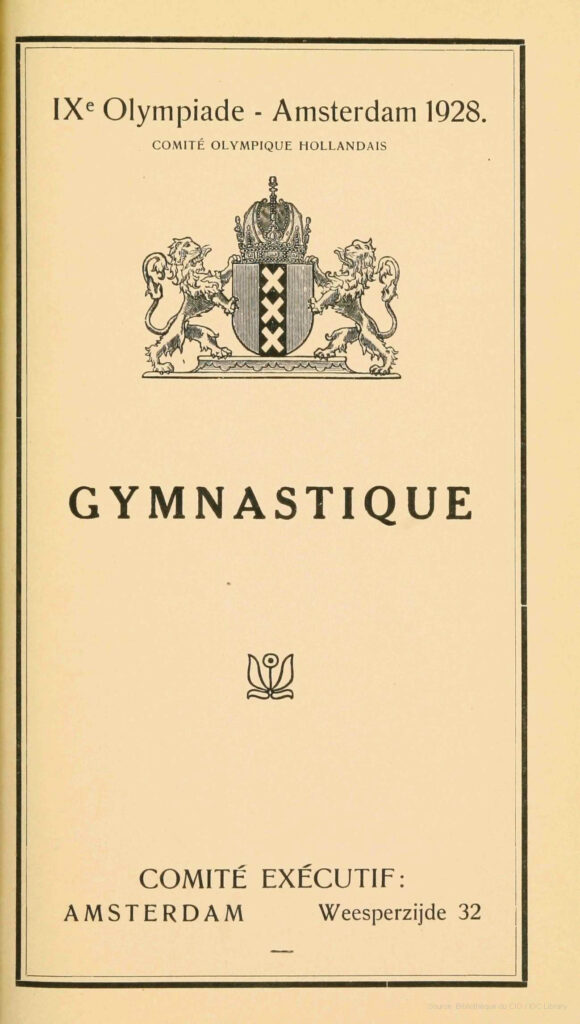
In 1950, Hans Eugster scored a perfect 10 on the parallel bars at the World Championships. It was the first 10 under the very first men’s Code of Points (1949).
The competition wasn’t without its judging controversies that spilled over into the pages of the French and Swiss newspapers.
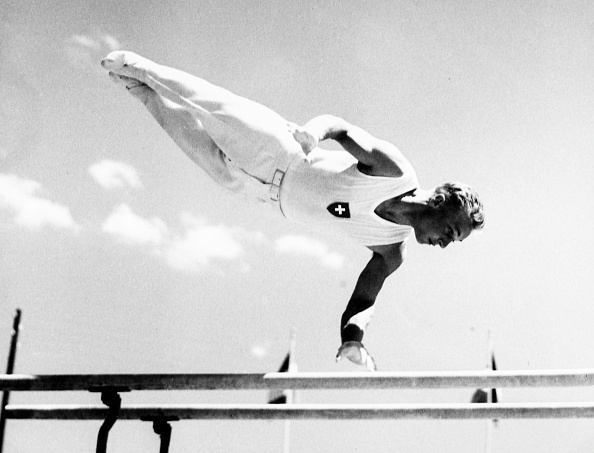
Competition previews are a tried and true genre of gymnastics sports writing. They give you a snapshot of who are the favorites, how certain countries’ gymnasts are perceived, and what the supposed expectations of the judges are. Plus, they are fun to read after the competition and see how much the author got right and wrong.
Let’s take a look at the preview for the 1950 World Championships in Basel, Switzerland. It was written by Jean A. Latte and was printed in the French Moroccan newspaper La Vigie Marocaine on July 7, 1950.
I’ve covered the first Olympic Games in Athens. Now, it’s time to discuss the first World Championships, which were held in Antwerp.
First things first, the competition wasn’t called a world championship at the time. It was referred to as the International Gymnastics Tournament (“Tournoi International de Gymnastique” in French or “Internationale Turntornooi” in Dutch). The competition was held in conjunction with the Belgian Federal Festival, August 14-18, 1903.
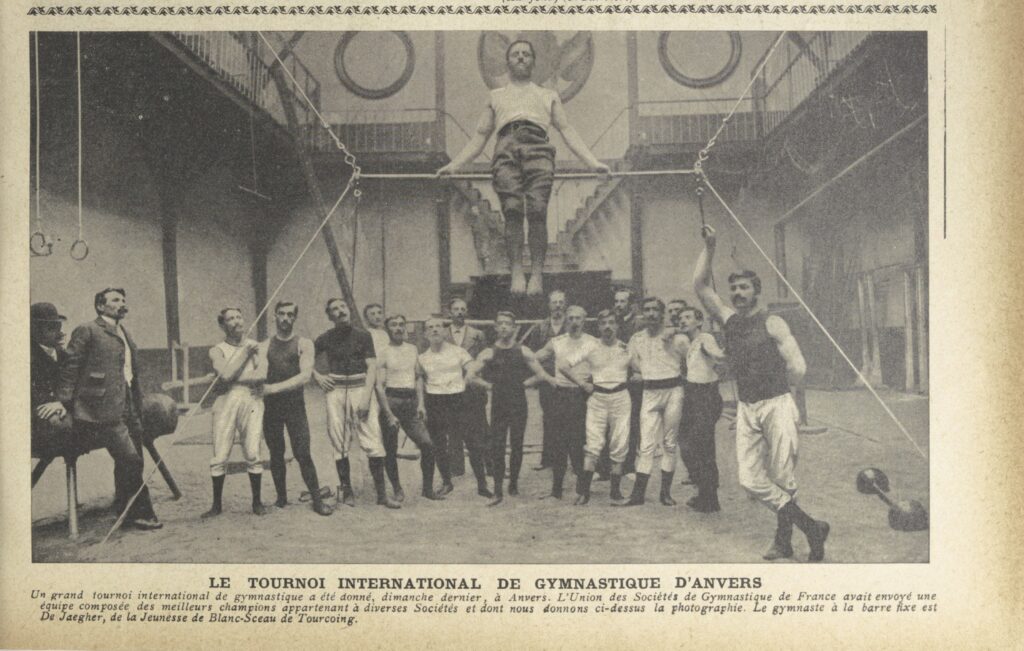
Note: I’ll refer to an article written by Pierre Hentgès, Sr. in this post. If you don’t know who he is, he was a Luxembourgish gymnast who competed at the 1912 Olympics. He later became the President of the Men’s Technical Committee of the FIG in 1954.